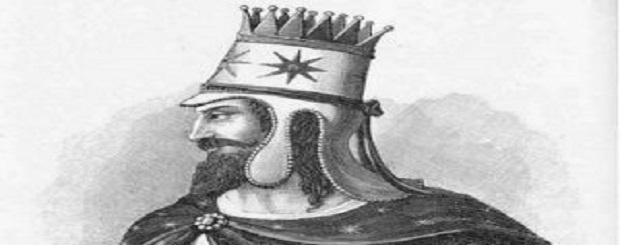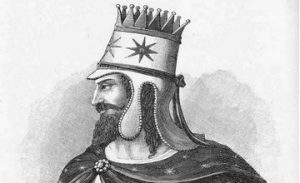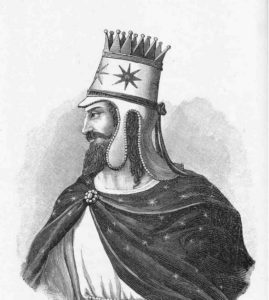
Art-A-Tsolum – King Artashes – Lord of the Greatest Part of Armenia
June 19, 2018 – Antiquities – HISTORY:

King of Greater Armenia Artashes was one of the most prominent politicians of his time. He has reigned for nearly 30 years from 189 BC to 160 BC. Artashes managed to unite almost all historical Armenian lands to form the kingdom of Greater Armenia.
A contemporary of Artashes, Greek historian Polybius called Artashes “the lord of the greatest part of Armenia”. Strabo further writes: “Armenia rose thanks to the efforts of Artashes, and everyone is monolingual [i.e. everyone is speaking Armenian]”. Strabo’s accounts testify that Artashes managed to incorporate all Armenian-speaking lands into a single state. These events played a crucial role in the subsequent establishment of the Armenian statehood.
A task of most importance to Artashes was the construction of a new capital of Greater Armenia since Armavir, its older capital, didn’t satisfy his demands. After Artashes had decided to found Artashat, a new capital of the kingdom, in 180 BC, the former Carthaginian commander Hannibal, who had fled his country, became his primary advisor in the construction works. After the defeat at the Battle of Magnesia, Hannibal fled to Armenia where Artashes warmly welcomed him, factually providing him with political refuge.
Hannibal was immensely amazed by the scale of the construction of new settlements in Armenia. Being proficient in all the nuances of town planning (particularly, building fortification structures), Hannibal enthusiastically participated in the large-scale building of the future Armenian capital. Greek biographer Plutarch’s accounts tell us that Hannibal gave many useful tips to Artashes. According to Plutarch, it was Hannibal who spotted a perfect, bare, and protected spot for the city. In the end, the king named the city “Artashat” in his own name.
This is the prehistory of Artashat’s establishment, which was located in the fertile Ararat Plateau, 10 kilometers southeast of the present-day town of Artashat, at the spot where the rivers Araks and Metsamor adjoined.
The name “Artashat” literally means “joy of Artashes”. Later, after the city had already been designed by Hannibal and the primary works had been done, the city received its second name “Armenian Carthage”.
5th-century Armenian historian Movses Khorenatsi described the construction of Artashat as well: “Artashes departed for the intersection of Araks and Metsamor Rivers and, having taken fancy to the hill, built a city on it and named it ‘Artashat’ in his own name. Araks supplied it with a cedar forest, so, having quickly and effortlessly built the city, he founded a temple and moved there the statue of Artemida and all the idols of the ancestors from Bagaran. However, he installed the statue of Apollo outside of the city near the road.”
Remarkably, the waters of Araks have been factually used for the transport of whole structures to the construction site of Artashat.
Ancient Artashat had been located at the site of the present-day Khor Virap monastery. Lying on 10 hills, it occupied an area of 400 – 500 ha. This territory still has clear traces of the fortress walls and buildings of the former city. The outskirts of the city had been encompassed by fortress walls with a total length of 10 kilometers. The city had been protected by the river from three sides and a wide moat filled with water from the fourth. The presence of two rivers, as well as the abundance of hills played a decisive role in the selection of the spot for the future city.
By the way, before Artashat, a more ancient fortress of the Urartian period had been located at the same spot.
The geographical location of the city had also been favorable as this area of Ararat Plateau had been a crossroad of trade routes going from south to north and from east to west. Unsurprisingly, Artashat would serve as the political, economic, and cultural center of Greater Armenia for the coming six centuries.
Ruben Shukhyan

King of Greater Armenia Artashes-reigned for nearly 30 years from 189 BC to 160 BC
allinnet.info/antiquities/king-artashes-lord-of-the-greatest-part-of-armenia/?
